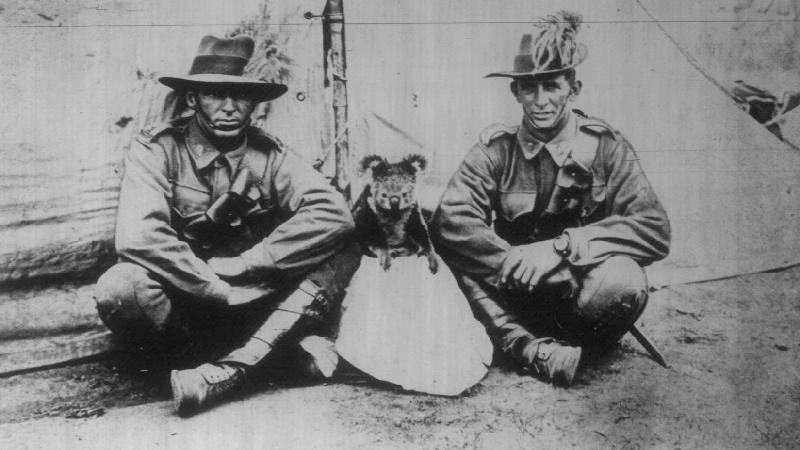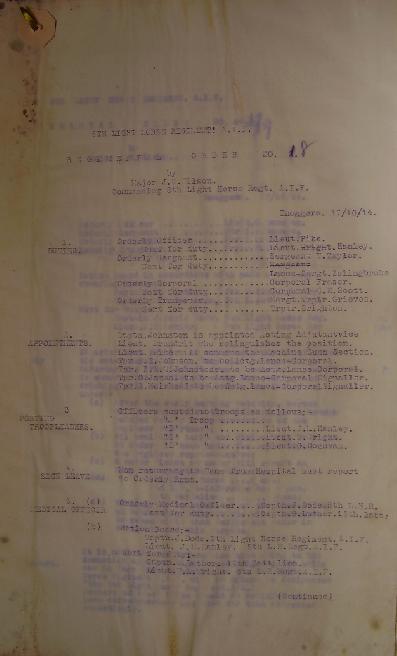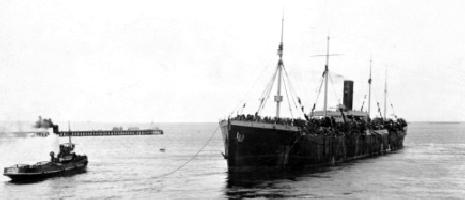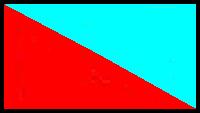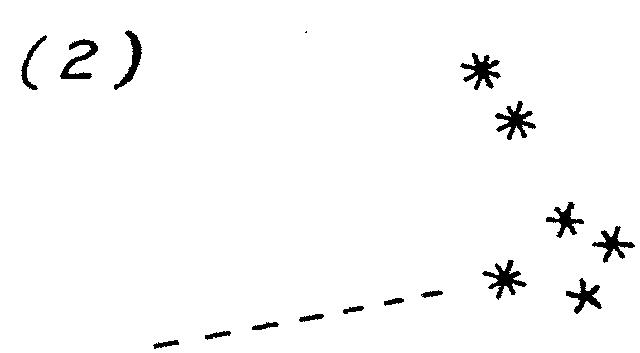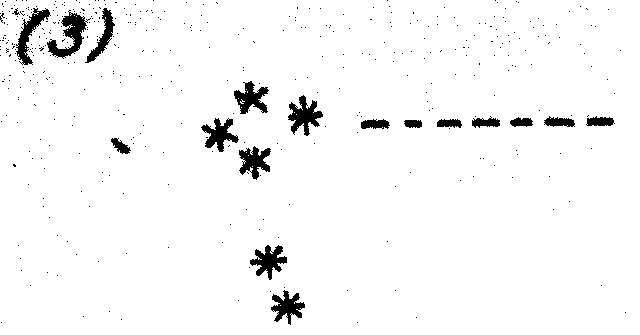Topic: AIF - 1B - 1 LHR
1st LHR, AIF
1st Australian Light Horse Regiment
Roll of Honour
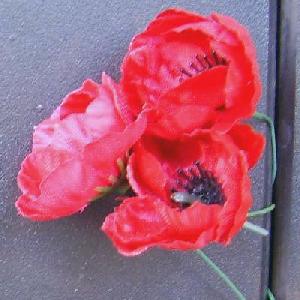
Poppies on the Roll of Honour, Australian War Memorial, Canberra
The Roll of Honour contains the names of all the men known to have served at one time with the 1st Light Horse Regiment and gave their lives in service of Australia, whether as part of the 1st Light Horse Regiment or another unit.
Roll of Honour
Archibald ABBOTT, Killed in Action, 20 April 1918.
Rupert Clarence ACKLAND, Died of Wounds, 10 January 1917.
Carl ADELT, Died of Wounds, 16 May 1915, and subsequently buried at sea.
Ralph ALLDRITT, Killed in Action, 18 May 1915.
Patrick Sinclair ANDERSON, Died of Wounds, 30 April 1915.
Holbrook Mitchelmore ATTWOOD, Died of Disease, 30 June 1915
Frederick AUGER, Died of Disease, 26 September 1915
Harold Louis BAKER, Died of Wounds, 21 May 1915, and subsequently buried at sea.
William John BARRY, Killed in Action, 7 August 1915.
Eric Charles BATTYE, Killed in Action, 16 July 1918.
James BECK, Died of Accident, 29 March 1917.
Louis Augustus BELL, Killed in Action, 26 October 1917.
Harry Mason BELWOOD, Died of Disease, 21 January 1917.
Henry Granville BERNIE, Died of Disease, 21 October 1918.
Frederick Anthony BONE, Killed in Action, 29 May 1915.
John BOSEMAN, Killed in Action, 7 August 1915.
Errol Roland BOUGHTON, Killed in Action, 9 August 1916.
John Joseph BOURKE, Killed in Action, 7 August 1915.
Valentine Fenell BOWLER, Died of Wounds, 7 August 1915.
George Alfred BRANN, Died of Wounds, 19 August 1916.
Louis Shannon BROOK, Killed in Action, 28 September 1918.
Sydney Bunten BROWN, Killed in Action, 7 August 1915.
Harold Keith BUCHANAN, Killed in Action, 23 July 1917.
Alfred Douglas Norman BULL, Died of Wounds, 2 November 1917.
Albert BULMER, Killed in Action, 7 August 1915.
Frederick George BURNS, Killed in Action, 3 November 1917.
Henry Moore BURNS, Killed in Action, 7 August 1915.
Frank Terrence BUSH, Died of Disease, 1 January 1917.
Joseph CAHILL, Killed in Action, 1 September 1917.
Douglas Gordon CAMPBELL, Killed in Action, 21 October 1917.
Harold CAMPBELL, Killed in Action, 7 August 1915.
William McLellan CAMPBELL, Killed in Action, 3 November 1917.
Ernest William CAPP, Died of Disease, 28 April 1916.
Frank CARNEY, Killed in Action, 7 August 1915.
Roland Mansfield CARR, Died of Wounds, 21 November 1915, and subsequently buried at sea.
Robert Laing CHAMBERS, Killed in Action, 18 May 1915.
Percy Wellesley CHAPMAN, Killed in Action, 12 March 1917.
Raymond William CHAPPELL, Killed in Action, 13 July 1918.
Edwin George CHAVE, Died of Accident, 17 March 1917.
George CHENHALL, Died of Wounds, 10 June 1916.
Henry James CHIVERS, Died of Disease, 11 December 1918.
Alfred James CLARK, Died of Wounds, 27 May 1915, and subsequently buried at sea .
Hugh CLARK, Killed in Action, 18 May 1915.
Lionel Robert CLARKE, Died of Wounds, 3 August 1917.
Ernest Randolph CLUETT, Killed in Action, 7 August 1915.
Percy Charlton COBCROFT, Died of Wounds, 2 May 1917.
Sidney Harold COLEMAN, Died of Wounds, 29 November 1917.
John Joseph CONDELL, Killed in Action, 7 August 1915.
William James COOK, Killed in Action, 13 August 1917.
Collingwood Thomas COOPER, Killed in Action, 28 July 1915.
Lloyd Alexander CORLISS, Died of Wounds, 17 November 1917.
Walter Herbert COURTMAN, Killed in Action, 3 August 1916.
Wallace COX, Died of Wounds, 7 August 1915.
George Cecil CRAKE, Killed in Action, 14 May 1915.
Henry Anthony CREED, Died of Wounds, 25 December 1915.
William Donald CRICHTON, Killed in Action, 7 August 1915.
Frederick Gordon CRISP, Died of Wounds, 8 August 1915, and subsequently buried at sea.
Leslie James CUBIS, Killed in Action, 4 October 1918.
William Hiliary CUMMING, Killed in Action, 9 August 1918.
Albert Edward DAWSON, Died of Wounds, 4 November 1917.
Arthur Stewart DEAN, Killed in Action, 7 August 1915.
Reginald Charles DeLEPERVANCHE, Killed in Action, 7 August 1915.
William Francis DOALMAN, Died of Disease, 16 February 1919.
George Finley DONNISON, Died of Wounds, 30 March 1918.
Harry DOOLEY, Died of Wounds, 7 August 1916.
Eric Sheen DOWLING, Died of Wounds, 18 November 1917.
Henry Cecil DRADER, Killed in Action, 3 November 1917.
Athol Bert EATHER, Killed in Action, 7 August 1915.
Leslie EBSWORTH, Killed in Action, 15 October 1917.
Francis William EDWARDS, Killed in Action, 29 May 1915.
George Peacock EDWARDS, Died of Disease, 20 November 1916.
William James Munro EDWARDS, Killed in Action, 3 November 1917.
Joseph John EGAN, Killed in Action, 6 August 1916.
Stephen ELLERY, Killed in Action, 9 August 1916.
Leslie Shaw ELLIOTT, Killed in Action, 3 May 1916.
Guy ELLIS, Killed in Action, 7 August 1915.
Reginald ELLIS, Killed in Action, 3 May 1917.
David EVANS, Killed in Action, 14 May 1915.
Arthur Clyde FAINT, Died of Wounds, 4 November 1917.
William Hewitt FELL, Died of Wounds, 4 May 1918.
Ernest James FIRTH, Killed in Action, 3 November 1917.
John Byers FISHER, Killed in Action, 18 May 1915.
James Martin FOLLENT, Killed in Action, 7 August 1915.
Richard Oscar FORD, Died of Disease, 4 February 1919.
Reginald James Thomas FORSYTH, Died of Accident, 16 February 1918.
George Samuel FOSKETT, Died of Wounds, 20 June 1918.
Lionel Rupert FOWLER, Died of Disease, 12 May 1915.
Owen Albert William FOX, Died of Wounds, 13 August 1918.
George FRANK, Died of Wounds, 10 June 1915.
Donald Alexander FRASER, Killed in Action, 7 August 1915.
Frederick FRIENDSHIP, Died of Wounds, 1 November 1917.
James GALL, Died of Disease, 31 July 1915.
Joseph GARBUTT, Died of Wounds, 1 October 1917.
Cornelius GEILVOET, Died of Wounds, 24 May 1915.
Charles William GIBSON, Killed in Action, 7 August 1915.
Russell William GIBSON, Killed in Action, 7 August 1915.
Bartholomew James GOGGINS, Died of Wounds, 5 August 1916.
Richard GRAHAM, Killed in Action, 19 April 1917.William James GRAHAM, Killed in Action, 4 August 1916.
James GREEN, Killed in Action, 7 August 1915.
Thaddeus Victor GREEN, Died of Wounds, 17 November 1917.
Frederick William Ernest GUILLE, Died of Accident, 25 April 1916.
Frederick Alexander GUTHRIE, Killed in Action, 3 November 1917.
Claude GUYER, Died of Wounds, 4 November 1917.
Thomas William HAGLEY, Died of Wounds, 20 April 1918.
Arthur John HAILSTONE, Killed in Action, 7 August 1915.
Herbert Percival HAMILTON, Killed in Action, 7 August 1915.
Karl Fletcher HARGRAVE, Killed in Action, 31 October 1917.
Clarence George Wentworth HARTWELL, Killed in Action, 17 August 1918.
Sidney Frederick HARTWELL, Died of Wounds, 22 October 1917.
Monaughan Raymond HAYES, Killed in Action, 31 July 1915.
David HENDERSON, Killed in Action, 7 August 1915.
Lindon Howard Russell HIGINBOTHAM, Died of Wounds, 21 June 1918.
George HILLS, Died of Wounds, 8 August 1915, and subsequently buried at sea.
Arthur Ernest HOBBS, Died of Disease, 24 October 1918.
Raymond Robert George HOBDEN, Killed in Action, 18 May 1915.
George HOLDEN, Died of Disease, 17 October 1918.
Percy Walter HOLPEN, Died of Disease, 26 November 1918.
Charles George Golding HOWARD, Killed in Action, 9 April 1917.
Ernest Alfred Knight HUDSON, Died of Disease, 27 October 1918.
Frederick William HUNT, Killed in Action, 18 May 1915.
Reginald Vernon HUNTER, Died of Disease, 13 November 1918.
Allan Stokeham HUTHWAITE, Died of Wounds, 5 November 1917 .
George Leonard ILLINGWORTH, Died of Wounds, 4 November 1917.
William ISTED, Died of Wounds, 16 August 1915.
Harry Allan JACOB, Died of Accident, 9 November 1918.
John JEFFREY, Killed in Action, 7 August 1915.
Sydney Ellis Clare JOHNSON, Killed in Action, 3 November 1917.
Osborne William JOHNSTON, Killed in Action, 3 November 1917.
Stanley Ivan KAISER, Killed in Action, 7 August 1915.
Francis William KANE, Died of Wounds, 23 May 1915, and subsequently buried at sea.
Austin KEANE, Killed in Action, 4 August 1916.
Roy Oscar Claude KEENE, Killed in Action, 16 November 1917.
Russell Stanley KEMPE, Killed in Action, 7 August 1915.
Harold Younger KERR, Killed in Action, 7 August 1915.
Edmund KILEY, Killed in Action, 7 August 1915.
Martin Michael KINNANE, Died of Disease, 19 April 1916.
Leslie Matthew KIRLEY, Killed in Action, 3 November 1917.
Henry Frederick KOLTS, Killed in Action, 7 August 1915.
Matthew LACEY, Died of Disease, 15 April 1917.
John LAUDER, Killed in Action, 7 August 1915.
Leslie Claude LAUNT, Killed in Action, 7 August 1915.
Jack LAW, Killed in Action, 9 January 1917.
Sidney LEE, Killed in Action, 7 August 1915.
Edwin Alexander LEESE, Killed in Action, 9 January 1917.
Patrick Joseph LENEHAN, Killed in Action, 31 October 1917.
Harry LEWRY, Killed in Action, 11 October 1918.
Cecil Reginald John LIDSTER, Killed in Action, 20 May 1915.
Thomas Francis LINDSAY, Killed in Action, 14 July 1918.
Everard Claude LONSDALE, Killed in Action, 18 May 1915.
John Stone William LORD, Died of Accident, 12 May 1918.
Walter Bernard LORD, Killed in Action, 4 August 1916.
Norman Beresford LOVETT, Killed in Action, 9 April 1918.
Donald Grantworth LUCAS, Died of Wounds, 15 July 1918.
Frank LUTTRELL, Killed in Action, 7 August 1915.
James LYALL, Killed in Action, 4 October 1917.
Edward Thomas LYNCH, Killed in Action, 9 January 1917.
Ronald Alexander Leslie MacDONALD, Killed in Action, 9 August 1916.
Thomas MacLEAN, Died of Wounds, 20 August 1915.
Sidney Alfred MADDISON, Killed in Action, 31 October 1917.
Eric William MAGEE, Died of Wounds, 8 November 1915, and subsequently buried at sea.
George Wesley MAGRATH, Killed in Action, 7 August 1915.
Percival MANN, Died of Wounds, 28 March 1918.
Archer Gibson MANNING, Killed in Action, 7 August 1915.
Edward Charles MANSON, Killed in Action, 18 May 1915.
Alfred Percy MARKS, Died of Disease, 23 November 1917.
Lionel Charles MARSH, Killed in Action, 11 October 1917.
Alfred MARTIN, Died of Disease, 4 November 1918.
James MARTIN, Killed in Action, 7 August 1915.
John Thomas MARTIN, Killed in Action, 3 November 1917.
Claude MASKEY, Died of Wounds, 24 September 1917.
Allen Stuart McARTHUR, Killed in Action, 18 May 1915.
James McCARTHY, Killed in Action, 13 July 1917.
Alexander Thomas McCLYMONT, Killed in Action, 31 October 1917.
John Richard McDONALD, Killed in Action, 7 November 1917.
Keith Vivers McDONALD, Killed in Action, 7 August 1915.
John Harold McGREGOR, Killed in Action, 7 August 1915.
John William Charles McGREGOR, Died of Disease, 30 November 1918.
William Joseph McINTOSH, Died of Disease, 18 October 1918.
Joseph Lewis McKAY, Killed in Action, 7 August 1915.
Arundel James Gwydir McKID, Killed in Action, 3 November 1917.
Alexander McKINNON, Died of Wounds, 1 September 1915.
Allan Hugh McMASTER, Died of Wounds, 26 May 1915.
Walter Provis McMULLIN, Died of Wounds, 6 August 1917.
William McQUIGGIN, Killed in Action, 4 August 1916.
John Hugh McRAE, Died of Wounds, 15 August 1915.
Arnold Selwyn METCALFE, Killed in Action, 19 April 1918.
John George Henry METCALFE, Killed in Action, 1 June 1917.
William MITCHELL, Killed in Action, 3 May 1917.
Ernest Cameron MOFFAT, Killed in Action, 18 May 1915.
William John Cecil MONAGHAN, Killed in Action, 29 June 1915.
Walter John MOORE, Killed in Action, 8 August 1918.
Walter Tertius MORRICE, Died of Wounds, 28 September 1918.
Edward William MORRIS, Killed in Action, 9 June 1917.
George John MORRISON, Died of Wounds, 5 November 1917.
Vivian Roy MORROW, Killed in Action, 4 August 1916.
Joel MOSS, Killed in Action, 3 May 1917.
Ralph Graham MOTTERSHEAD, Killed in Action, 4 August 1916.
Thomas William MOUNTAIN, Killed in Action, 3 November 1917.
Patrick Joseph MOY, Killed in Action, 16 May 1915.
John Bede MOYLAN, Died of Disease, 28 September 1918.
Dennis MULLEN, Died of Wounds, 3 November 1917.
John Eric MUNRO, Died of Disease, 1 April 1919.
George Wren MURRAY, Died of Disease, 17 January 1918.
Archibald John MYCHAEL, Killed in Action, 21 August 1915.
Burdett Phillip NETTLETON, Killed in Action, 7 August 1915.
John NEWTON, Killed in Action, 9 October 1915.
Owen Eric NEWTON, Killed in Action, 7 August 1915.
Arthur Richard NICHOLL, Died of Wounds, 22 January 1917.
George Fletcher NOBBS, Died of Wounds, 8 March 1918.
George Rawdon Ffrench NOBBS, Killed in Action, 9 August 1916.
Arthur Wellesley OAKES, Killed in Action, 7 August 1915.
Michael O'DONNELL, Died of Wounds, 17 July 1918.
Edward Harold O'NEILL, Died of Wounds, 18 June 1918.
Frank Henderson PAUL, Killed in Action, 22 May 1915.
Gerald Fitzroy PEACOCK, Killed in Action, 7 August 1915.
Harold Edward PEAK, Killed in Action, 28 October 1916.
Wilfred Morris PEARCE, Died of Disease, 5 July 1915 .
Henry James PELHAM, Died of Disease, 18 March 1919.
Walter Delwyn PERKINS, Died of Disease, 27 March 1915.
Robert James Joseph PERRAU, Died of Wounds, 8 August 1915, and subsequently buried at sea.
Arthur Edward PHILLIPS, Killed in Action, 28 September 1917.
William Harold PINKERTON, Killed in Action, 7 August 1915.
Jack PLUSH, Killed in Action, 14 June 1917.
Alfred Thomas POOLE, Died of Wounds, 20 August 1915.
John Richardson POOLE, Died of Wounds, 5 November 1916.
John Gladstone POPE, Killed in Action, 26 May 1915.
John Leslie PRICE, Killed in Action, 7 August 1915.
Frank PROCTOR, Killed in Action, 9 April 1917.
Wilfred George Albert PROCTOR, Died of Disease, 25 February 1919.
Arthur Richard QUARMBY, Killed in Action, 1 May 1918.
Clarence William RADBURN, Killed in Action, 28 September 1918.
John James RAFFERTY, Killed in Action, 5 November 1917.
Mark REED, Killed in Action, 7 August 1915.
James Moffat REID, Killed in Action, 7 August 1915.
Cuthbert Noel RICHARDSON, Killed in Action, 7 August 1915.
Alfred Charles ROBBINS, Died of Wounds, 13 June 1915.
Darcy James ROBERTS, Killed in Action, 6 August 1915.
Alexander ROBERTSON, Killed in Action, 27 June 1918.
Robert Hill ROBERTSON, Died of Wounds, 10 January 1917.
Frederick Charles ROBINSON, Died of Wounds, 4 November 1917.
William James ROBINSON, Killed in Action, 3 April 1918.
Leonard ROSSBACH, Died of Disease, 9 December 1918.
Werner Eric ROSSBACH, Killed in Action, 28 March 1918.
John Francis RUSSELL, Killed in Action, 12 October 1917.
Leslie RYAN, Killed in Action, 17 January 1917.
Cornelious John SCANLAN, Killed in Action, 7 August 1915.
George Edward SCHADEL, Killed in Action, 14 July 1918.
Thomas Moffatt SCOTT, Killed in Action, 14 July 1918.
Peter Patrick SEERY, Killed in Action, 7 November 1917.
Norman George SELFF, Died of Wounds, 11 August 1916.
Frederick SELLERS, Died of Wounds, 30 May 1915, and subsequently buried at sea.
Roy Stanley SEWELL, Killed in Action, 4 August 1916.
Francis James Murray SHEIL, Died of Wounds, 20 April 1917.
Cecil Job SHELDON, Killed in Action, 7 August 1915.
George Edmund SHEPHERD, Died of Accident, 21 December 1916.
Harry Heaslip SHERIDAN, Died of Disease, 29 April 1917.
Frederick Herbert SHERWOOD, Killed in Action, 7 August 1915.
Harold Samuel SHERWOOD, Killed in Action, 7 August 1915.
Hector SMALL, Died of Disease, 4 July 1915.
Charles Hart SMITH, Died of Wounds, 14 June 1917.
Herbert William James SMITH, Killed in Action, 9 April 1917.
Luide Ross Edward SMITH, Died of Wounds, 18 June 1915.
Reginald Sydney SMITH, Died of Wounds, 19 June 1915.
Robert Edwin John SMITH, Killed in Action, 7 August 1915.
Walter Stephen SMITH, Killed in Action, 3 November 1917.
Albert James SPICER, Killed in Action, 1 September 1918.
Edgar Roy STANFORD, Died of Wounds, 1 August 1915.
Francis Theodore STANTON, Died of Wounds, 11 January 1917.
Donald Edward STEWART, Died of Disease, 6 August 1915.
Robert Joseph STEWART, Killed in Action, 7 August 1915.
Alexander William STINSON, Died of Wounds, 19 May 1915, and subsequently buried at sea.
William Henry STRIBLEY, Killed in Action, 4 August 1916.
Richard TANNER, Killed in Action, 7 August 1915.
William TAYLOR, Killed in Action, 5 August 1917.
William Frederick TAYLOR, Killed in Action, 7 August 1915.
Stanley Stevenson THURLOW, Died of Wounds, 21 August 1915.
Edward Victor TIGHE, Killed in Action, 7 August 1915.
Garnet Edmund Iles TINSON, Died of Wounds, 9 August 1915, and subsequently buried at sea.
Thomas Alexander TOLAND, Died of Disease, 23 October 1918.
David TOMLINSON, Killed in Action, 11 July 1915.
Harold TUCK, Died of Wounds, 1 November 1917.
Michael TUCKEY, Killed in Action, 4 August 1916.
Ernest Douglas TURNER, Died of Wounds, 21 April 1917.
Frederick Maxwell VENESS, Killed in Action, 5 April 1918.
Frank (Laird) VILLIS, Killed in Action, 7 August 1915.
Francis Xavier WALSH, Died of Wounds, 17 October 1917.
Bruce Wynter WARDEN, Died of Wounds, 27 September 1917.
Charles WEALANDS, Killed in Action, 14 June 1917.
William Henry WEST, Died of Accident, 15 March 1915.
Thomas Charles WHEATLEY, Died of Disease, 26 September 1915, and subsequently buried at sea.
James Redfern WHITE, Killed in Action, 13 April 1917.
Leslie Gaviston WHITE, Died of Disease, 12 November 1914.
Robert Henry James WHITE, Died of Wounds, 14 August 1916.
William Arthur WHITTLE, Killed in Action, 18 May 1915.
Wilfred WILKINSON, Killed in Action, 18 June 1918.
George Alexander WILLIAMS, Died of Wounds, 9 August 1918.
Joseph WILLIAMS, Killed in Action, 3 November 1917.
Frank Lindsay WILLIS, Died of Wounds, 4 August 1916.
Alfred Thomas WINTERTON, Killed in Action, 4 August 1916.
Robert WISE, Killed in Action, 20 May 1915.
George Edward WOMACK, Killed in Action, 7 August 1915.
William Harry Rankin WOODS, Died of Wounds, 15 May 1915.
John Robert WRIGHT, Killed in Action, 3 November 1917.
Frederick Richard Charles YOUNG, Killed in Action, 7 August 1915.
Peter ZEISSER, Killed in Action, 7 August 1915.
Lest We Forget
Acknowledgement: Many thanks to Steve Becker who provided much of the raw material that appears in this item.
Further Reading:
1st Australian Light Horse Regiment, AIF
Battles where Australians fought, 1899-1920
Citation: 1st Australian Light Horse Regiment, Roll of Honour






